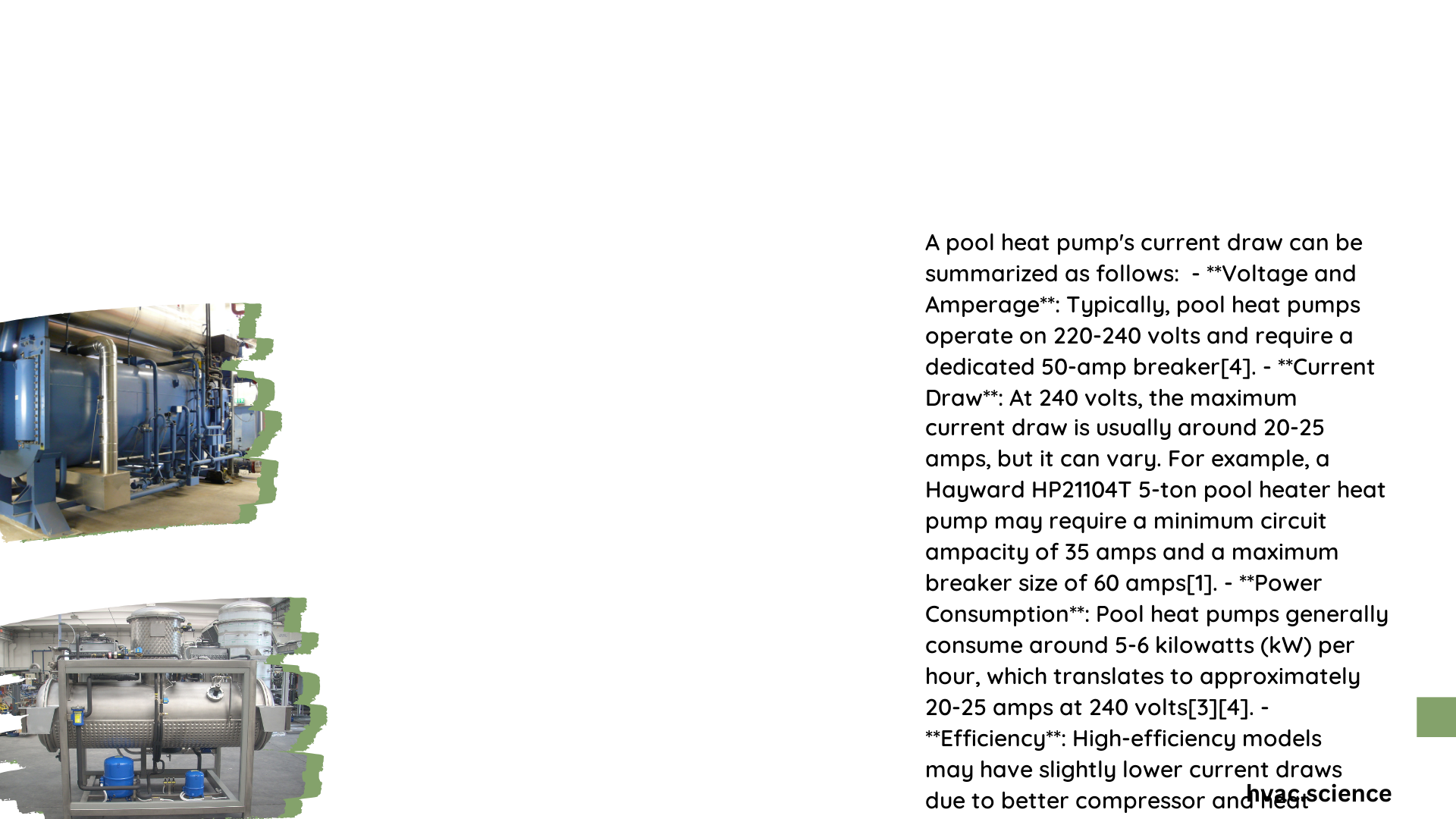Pool heat pump current draw represents a critical electrical parameter that determines the power consumption, operational efficiency, and overall performance of swimming pool heating systems. Understanding the precise electrical characteristics helps pool owners make informed decisions about energy usage, installation requirements, and long-term operational costs, ensuring optimal heating performance while managing electrical consumption effectively.
What Determines Pool Heat Pump Current Draw?
Pool heat pump current draw depends on multiple interconnected factors that influence electrical performance and energy consumption. These factors include:
- Heating Capacity
- Directly proportional to current requirements
- Measured in kilowatts (kW) and British Thermal Units (BTU)
-
Higher capacity models demand increased electrical input
-
Voltage Specifications
- Typically 220-240V single-phase systems
- Determines maximum current draw potential
- Critical for circuit breaker and wiring selections
Electrical Performance Metrics
| Heat Pump Model | Heating Capacity | Input Current | Voltage Range |
|---|---|---|---|
| Arctic Titanium 25ZA/B | 11 kW (37,500 BTU) | 8.1 A | 220V |
| Arctic Titanium 040ZA/B | 17.5 kW (59,710 BTU) | 12.8 A | 220V |
| DOEL Inverter | 16 kW (55,000 BTU) | 13.3 A | 220-240V |
How to Calculate Pool Heat Pump Current Draw?

Calculating current draw involves understanding several key parameters:
- Input Power Consumption
- Measure watts or kilowatts consumed
- Divide by system voltage to determine amperage
-
Example: 1,770 watts ÷ 220V = 8.1 A
-
Coefficient of Performance (COP)
- Indicates energy efficiency
- Higher COP means lower energy consumption
- DOEL Inverter ranges between 5.7-16.4 COP
Operational Cost Estimation Formula
Daily Cost = Energy Consumption (kWh) × Electricity Rate × Operating Hours
What Factors Influence Current Draw?
Several environmental and technical factors impact pool heat pump current draw:
- Air temperature
- Humidity levels
- Water temperature
- Heat pump design
- Compressor efficiency
- Ambient conditions
Recommended Electrical Considerations
- Circuit Breaker Selection
- Match breaker size to maximum current draw
- Typically 15-20 A for standard pool heat pumps
-
Consult professional electrician
-
Wire Gauge Recommendations
- 10-gauge wire: Up to 20 A
- 8-gauge wire: Up to 30 A
- Consider installation distance and local electrical codes
Efficiency Optimization Strategies
- Regular maintenance
- Proper insulation
- Optimal temperature settings
- Use during peak efficiency hours
- Consider inverter-based models
Key Takeaways
- Understand your specific heat pump’s electrical requirements
- Monitor current draw for energy management
- Invest in high-efficiency models
- Consider professional installation
Pro Tip: Always verify electrical specifications with manufacturer documentation and consult certified professionals for precise installation guidance.
